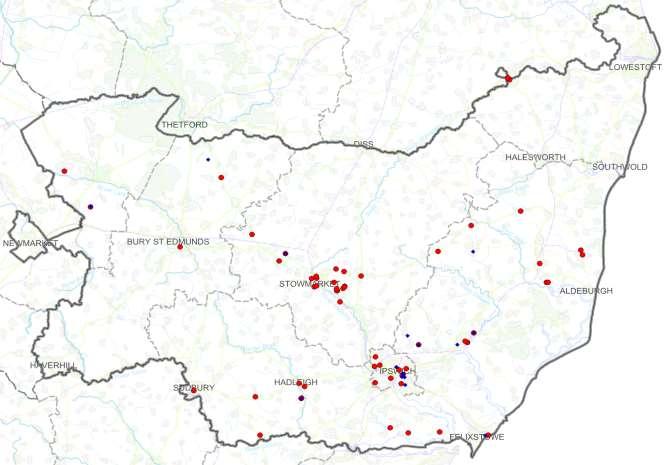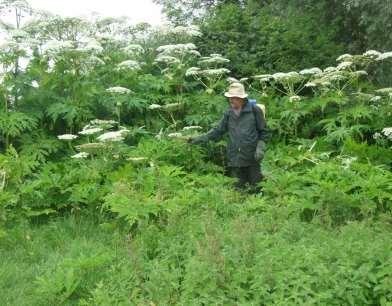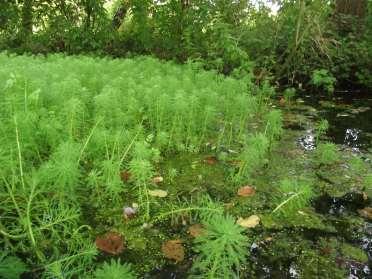
3 minute read
Keeping non-native invasive species at bay - the importance of good biosecurity
Dedham Vale AONB and Stour Valley Project
Biosecurity Plan for Norfolk and Suffolk
Since early 2015 we have been working with the Norfolk Non-Native Species Initiative to contribute to their Biosecurity Plan for Norfolk and Suffolk by developing a Biosecurity and Control Action Plan for the River Stour catchment. The Plan has highlighted the need to not only continue with the great control work that has been taking place in the Valley, but also to implement measures to prevent the spread of new invasive non-native species, such as the fearsomely named killer shrimp, into and out of, the catchment.
River Stour Biosecurity and Control Action Plan
The Biosecurity and Control Action Plan focuses on identifying the high risk species that could invade the Stour catchment; the pathways for invasion; and provides an action plan for 2015-2019. The plan deals with both reducing the risk of invasion from new invasive species and tackling the existing ones that pose a threat to our native biodiversity. The plan is now available online at www.dedhamvalestourvalley.org
Local action
Matt Holden, River Stour Project Officer, has worked successfully with landowners, land managers and community groups to instigate practical control of giant hogweed and Himalayan balsam in the Valley. Matt has now left to travel the world, our new Project Officer Alex Moore da Luz will be in post 2nd September. The Stour Valley Invasive NonNative Species Local Action Group is also gaining steam and has focused on obtaining information on which species we should target and at which sites.
The first day of control took place at Primrose Wood, just upstream of Boxford in May. It appears that the balsam on the site has declined since our first pulls in 2013 which is brilliant. In 2014 it took us nearly two days to pull all the balsam at Primrose Wood, this year it took just one day. Either we are getting more efficient or the balsam is reducing in number!
Giant Hogweed on the River Brett
One day of spray work has already been conducted by Neil Catchpole and monitoring of last year’s control is underway. Whilst it is evident that in some areas the hogweed has declined significantly, in others there are hordes of young plants sprouting up in the areas where their parent plant once used to stand. It really has highlighted the invasive capability of this plant and the need for a long term control strategy to eliminate the established seed bank.
Giant hogweed on the rivers Glem and Stour
We are extremely grateful to the 15 landowners who have continued to support this collaborative control project in 2015. The aim of this project has been to target the source of giant hogweed in the Stour catchment and control work started on the River Glem on the 3rd of June.

Neil Catchpole spraying Giant Hogweed
Future Plans
This summer we will be finishing off the giant hogweed control programmes on the Brett and Stour, monitoring the floating pennywort pond at Great Waldingfield (fingers crossed it has gone for good!) and taking on balsam for a final day on the River Box. The Local Action Group will be meeting again in the autumn to discuss how to deliver the actions outlined in the Biosecurity and Control Action Plan. This plan will help guide the actions taken by both ourselves and other stakeholders to tackle invasive non-native species in the Valley from 2015 –2019. If you wish to learn more about the plan and/or attend the next Local Action Group meeting on 25th November in Sudbury then please contact us for further details.

Parrots feather Myriophyllum aquaticum found in a pond at Monks Eleigh in 2014. This first record in the Stour catchment demonstrates the need to remain vigilant in preventing the








